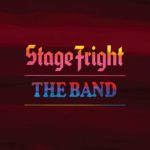How often myth and reality diverge. Stage Fright was the third album for The Band, peaking in the Top 5, outselling its two predecessors- Music From Big Pink and The Band. Still, it’s the bulky biceps of those first two, however, that wear the conspicuous tattoos of “The Weight” and “Up on Cripple Creek,” respectively, flexing the group’s immortality. That opening pair of albums also proudly waves the flag of Woodstock (town, if not festival), forever carrying the generational ethos of the bucolic upstate village, even though they were recorded in New York City and Los Angeles.
The reality is that Stage Fright is the most homegrown of the three records, and derives its winking title from the empty playhouse in Woodstock where it was tracked. Another truth: it’s a really great album. Here it’s presented in its 50th anniversary tuxedo, remixed and re-sequenced by the guiding hand of Robbie Robertson as he did for the 50s of the first two. Sprinkle in some rough bonus cuts from a Calgary hotel room, a full concert performance from London in June of 1971, and a blu-ray surround sound mix, and it’s another beautifully delivered deluxe set.
As for the new stereo mix, it’s maybe more appropriate here than ever. Back in 1970, when originally completed, the engineers in charge- no less than the legendary Glyn Johns (Rolling Stones, Beatles) and Todd Rundgren- each offered a final mix. In subsequent interviews, neither Johns nor Rundgren could say for sure which mixes were used on the final pressing of the album. In effect, this new mix, handled by the incomparable Bob Clearmountain, could be seen as definitive. As well, there is the new track order creating a better rise and flow to the album overall, arranged by Robertson as an amendment to the apparently contentious process five decades earlier.
Despite how celebratory and bright, (and Southern), so much of Stage Fright sounds, within the group there was growing division and encroaching darkness. Robertson anchored the sessions, writing the majority of songs, including the entire Side One, as his guitar playing became especially prominent and centered. A handful of classics emerged: “The Shape I’m In;” “Daniel and the Sacred Harp;” the title track, to name a few. And there would be the momentous concerts that followed throughout 1971, including the year-ending stint in New York City that became Rock of Ages, considered among the great live albums of all-time. Truthfully, though, a strong challenge for supremacy to those late December shows is the Royal Albert Hall set included in this edition; biting, raucous, with something to prove. If The Band was starting to break, the music was still binding.
As mythical as those first two Band albums have become, and rightfully so, Stage Fright obliterates the notion that the third album’s creative results were anything less than an ascendant mark. Really, it’s The Band in its most natural and comfortable surroundings. It’s also the slightly fraying quintet making an album sound natural and comfortable at a time that, in reality, wasn’t.



No Comments comments associated with this post